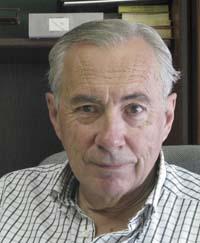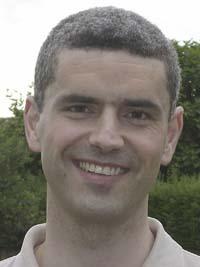The house is not always local
The Spanish government has taken the decision to close the headquarters of Santa María de Garo in 2013. It has been a controversial decision, but the debate about the closure or continuation was on in society for a long time. The main issue was, and is, security, as well as economic and energy reasons. For example, Nuclenor has pointed out on more than one occasion that the electricity generated by Garo is essential to satisfy our consumption.
However, the data show the opposite. According to REE, the Spanish Electricity Network, the Garo power plant generated last year 1.36% of the electricity produced in Spain, specifically 4.021 GWh. And that same year, Spain exported 11,221 net GWh.
However, this is not the only example that data and opinions do not match, since the same occurs with renewable energies. In fact, we hear that they are increasingly widespread, and it is true that they increase year after year, but the main sources of electricity that is generated and consumed in the Basque Country remain fossil fuels and nuclear energy.
The exception is Navarra, so many have it as a model. Thus, two years ago, the prestigious scientific journal Nature gave an article to the productive model of Navarre. The author, Daemon Fairless, explains the evolution of electrical production in the territory.
Fairless has emphasized that at the beginning of the 90's the only renewable energy sources were the small hydroelectric power stations of the streams that descend from the Pyrenees, and that in just twenty years 60% of the electricity generated in Navarre was from renewable sources. According to the article, wind energy has been the key to change, explaining the economic, environmental and social benefits of this change.

Model to the limit
Despite not reading the article, it is evident that in Navarre wind energy has had a spectacular development. However, some experts question the applicability of the Navarrese model. Gorka Bueno, professor of the Department of Electronics and Telecommunications of the UPV at the School of Engineering of Bilbao, considers that "we have to take into account the structure of the electric grid".
In fact, Navarre cannot be taken as a reference, since it is not an electric island. The electricity produced by the wind turbines of Navarre is distributed nationally. If the network were limited to Navarre, the wind generation could not be so large.
Wind power has a special regime to promote wind generation, which is integrated into the network as it occurs. However, wind generation is variable and it is not possible to manage nuclear electricity, based on fossil fuels and as easily as hydroelectric to meet the demand that is generated in the network at every moment. For this reason, the wind power that can capture the network at any given time is limited. Well it is clear: "Wind power production in Navarre throughout the state will require profound transformations in the topology and management of the network, otherwise the network will not be stable."
According to the European Union projects, in 2020 the European network will be prepared for 30% of the electricity generated from renewable sources. Currently, 40% of the electricity consumed in Navarre comes from the wind turbines, something similar happens in Denmark. "Much wind energy is produced in Denmark. But what happens? The Danish network has a very high interconnectivity with the German and the Scandinavian countries".

However, the Professor of Electrical Engineering at UPNA Blas Hermoso has another perspective. In his opinion, the problem of the evacuation of electricity generated through the network is "solved" in Navarre. He explains that a network of 400 kilovolts has recently been opened between Castejón and Muruarte de Reta.
According to the Government of Navarra, this will increase the installed power in renewables by 50%, being mainly wind. In this way, the installed power in 2016 is expected to be 1,536 MW (compared to the current 1,088 MW), but for this purpose they must install more lines, stations and high voltage transformers. For the moment, the network inaugurated will move to Vitoria-Gasteiz.
No more wind turbines
In any case, experts do not believe that the wind turbines expand much more in Navarre. In Nature's own article, the author mentions that wind farms have probably reached saturation. And this is due, on the one hand, to its impact on the landscape, that people would not easily accept the construction of new power plants and, on the other hand, that the new wind turbines are more efficient and, therefore, the installation of new ones in the place of the ancients could increase the installed power in the wind energy without building new power plants.
However, they are not the only limitations that the wind has for its expansion, but there is another more important one. As Hermoso indicates, the generation based on fossil fuels is "essential" to ensure sufficient electrical stability. "Wind turbines do not generate electricity if there is no wind." The data is that the wind turbines generate between 15-20% of the installed power. "And in addition, creation is not constant."

For example, on November 24, 2008, at 4:47 am, 43% of the demand in Spain was covered by wind, at three days, at 16:22, only 1.15%. It is an extreme example, but it shows that the variability of wind energy is evident.
That is why, according to Hermoso, basic power plants are necessary, and for that are the thermal ones of Castejón. Thus, Hermoso considers the existing model in Navarre "suitable". That is, in his opinion, energetically "equally adequate can be to guarantee basic electrical energy with nuclear power plants". Betting on one or the other is a political decision. France, for example, has opted for nuclear and Spain for a more diversified model".
There is an electrical exchange between both states, but if we look at the net balance it is not very high. This does not mean they are independent: gas is burned in the thermal power plants, and gas is imported from Algeria, Nigeria, Norway, Trinidad and Tobago, Omandi and Qatar, among others.
Gas dependent
This dependence is even greater in the ACBC. The electricity generation is based on thermal power stations and the supply of renewables is much lower than that of Navarre, eight times lower than that of thermal power plants.

Gorka Bueno describes the Basque government's commitment to natural gas generation as "worrying" and clearly denounces the article he wrote last year for the Gaindegia observatory. This article, which constitutes a serious energy dependence in the Basque Country, points out that if the objectives of the Government are met, in the ACBC the electrical power of the combined cycle thermal power plants could soon reach 65% of the total, that is, it will be based on the imported gas.
In addition to gas, the CAPV imports solid fuels for electricity generation. Thus, according to the Petroleum and Energy Economy report of the Basque Government, in 2006 65% of the solid fuels purchased by the community were destined for the generation of electricity.
These data contrasts fully with the desire to diminish dependence and with the objectives set by the government itself for 2010. In fact, he collected in his report Energy Strategy Euskadi 2010 which has as reference a European directive. According to this directive, for the coming year, 22% of the electricity consumed in the European Union should be obtained from renewable sources. The directive also establishes the participation that each country should have: Spanish should be 29.4% and French 21%.
To achieve this goal, the authors of the Euskadi 2010 strategy foresaw that wind energy will be fundamental and that the installed power for that year will be 623,611 MW, taking into account the large, small and isolated wind farms.
The difference between forecasts and reality is evident, both in the contribution of renewable sources and in the implementation of wind farms. The latest published data date from 2007, when 13% of electricity was generated by renewables, and the installed power in wind farms was 145 MW. In addition, in June of this year the Parliament requested the Government to halt all plans to implement wind farms until reaching an institutional and social consensus.

Thus, electricity generation has not grown according to the plan, not even for the degree of contribution of renewables, nor for the needs: electricity demand in 2007 has been 20.612 GWh, 1.6% higher than that of the previous year, while electricity generation has decreased by 10% to 12.597 GWh (61% of demand).
Nuclear in the real republic
In Iparralde energy dependence is also very high. The only generators of electricity are small hydroelectric power plants and several thermal ones that burn biomass. Among them, they do not produce either 2% of the electricity consumed in the three territories (according to 2005 data, 1.6% of the consumed). The rest are collected through the French network in the three territories, and almost everything comes from nuclear power plants.

In fact, nuclear power plants generate more than three quarters of the electricity produced in France (77%). Behind the United States, it is the second country in the world that generates more nuclear energy. And it aims to continue to have nuclear power in the future. It has 58 reactors of second generation, with an average age of 22 years and a forecast of good functioning until 40. However, starting in 2030 they will have to start building new reactors and are already discussing how they will have to be.
Therefore, in view of the projects of the French government, it does not seem that the energy situation of the three territories of the North will change substantially, although they can do so, especially for the recent exploitation of their resources (water, biomass and sun).
In Iparralde the situation is quite extreme, but in Euskal Herria there is an energy dependence. As Bueno points out, moreover, the dependence is not limited only to natural resources, but "is also enormous in infrastructures: the south depends on the Spanish network and the North of the French one".
With the current situation, getting electricity on our own is a dream, but Bueno thinks you can do something: "reduce consumption". The trend is the reverse.





